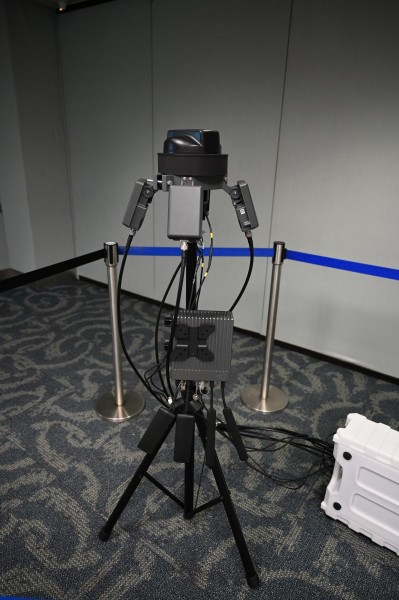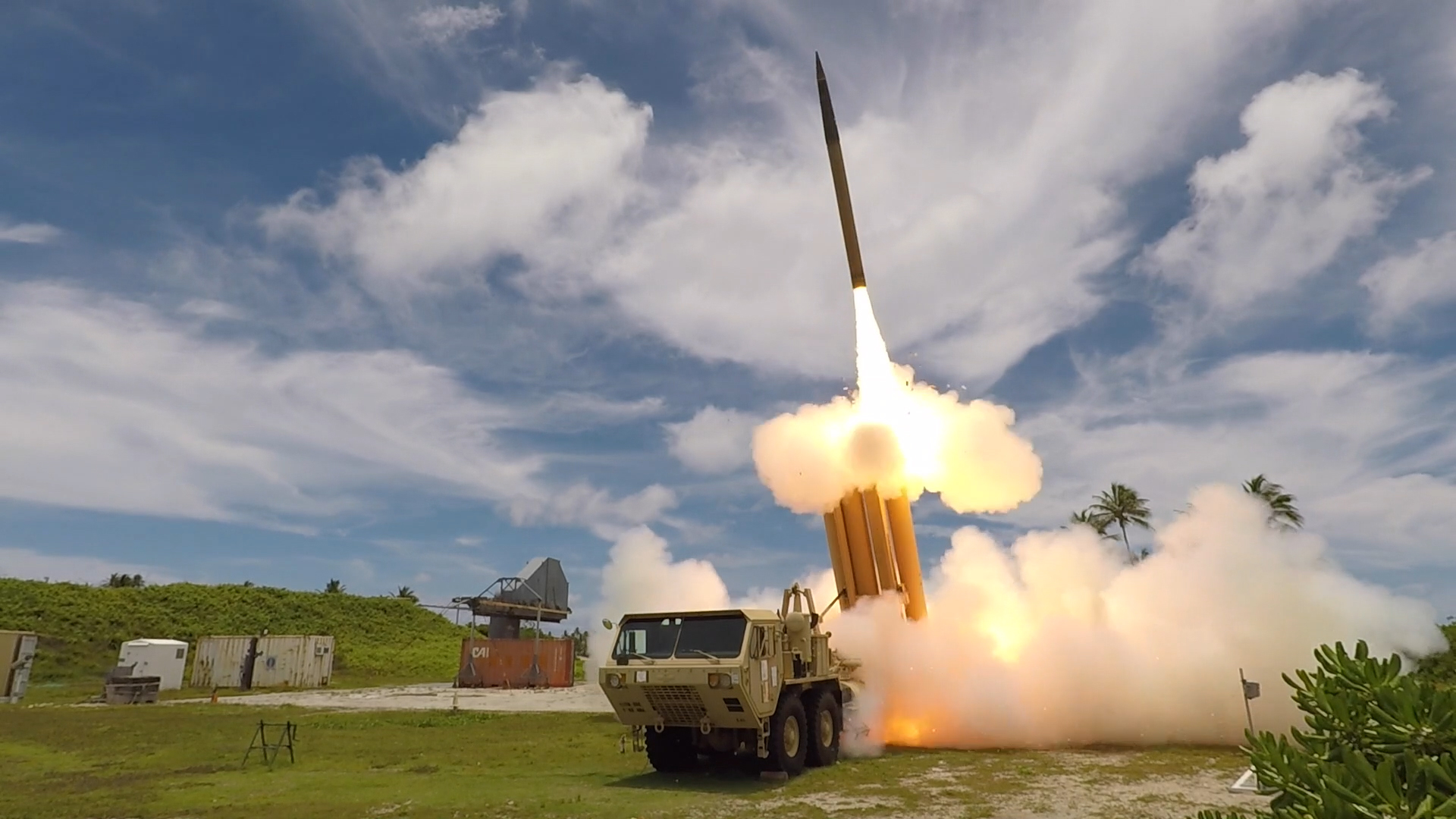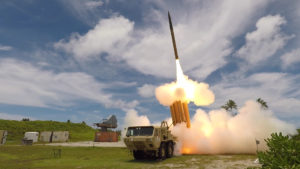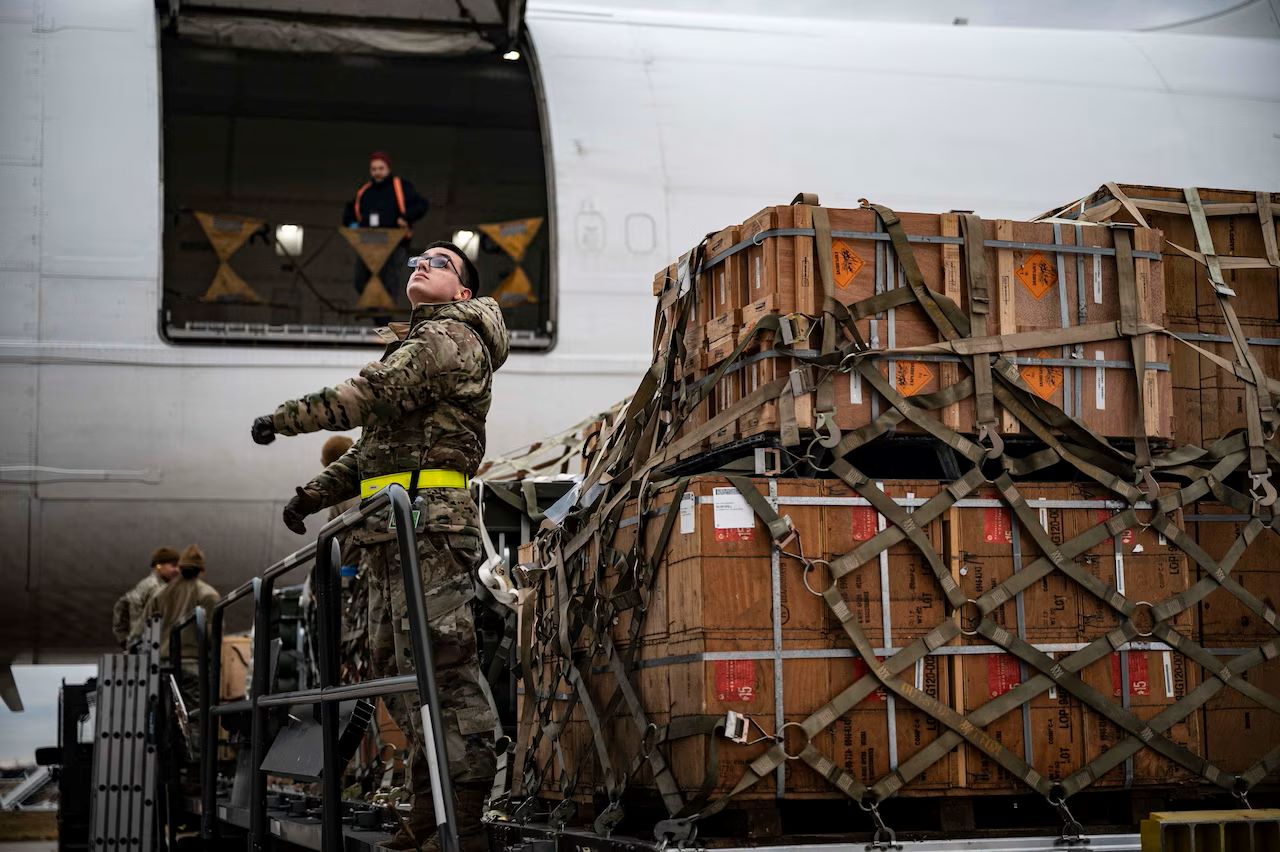Iron Dome Industry Day. The Missile Defense Agency’s Request for Information looking for capabilities to demonstrate for President Trump’s “Iron Dome for America” executive order includes a plan to conduct an industry day on Feb. 18. After the common day, MDA is prepared to conduct up to 60 minute-long sessions with individual parties to provide additional clarifications. Respondents intending to participate in individual sessions are to send requests by Feb. 10.
Aussie MQ-4C.
Northrop Grumman finished testing Australia’s third MQ-4C Triton unmanned aerial vehicle at its Palmdale, Calif., facility, the company said Feb. 6. The company is preparing to transport the Triton to Naval Air Station in Patuxent River, Md., where it will join the second aircraft for calibration testing before they are both sent to the Royal Australian Air Force. Delivery is scheduled for later this year.
Terminator Risk. Defense insiders have debated the level of importance of unmanned systems in Ukraine, and some have said that drones will never remove the historic pattern of mostly young men at arms dying for their respective countries. SpaceX founder Elon Musk, the world’s richest man and member of President Trump’s advisory team, disagrees, as he told U.S. Military Academy Dean Army Brig. Gen. Shane Reeves in a newly released interview from last August. “The biggest effect, I think, by far is AI on drones,” Musk said when asked how warfare will transform. “The current war in Ukraine is very much a drone war…A major power war is very much going to be a drone war. I do worry about the existential risk of AI, which is that, if you employ AI and drones, do you go down this path where eventually you get to Terminator? Try to avoid that. Minimize the Terminator risk, but essentially when you’re making military drones, you are making Terminators. I think you’ll somewhat be forced into giving the drone localized AI because if the AI’s far away, it can’t control it as well as localized AI–an autonomous killing machine once you give it the okay in a particular arena, and it goes.”
Golden Anniversary. The U.S. Air Force Red Flag 25-1 exercise at Nellis AFB, Nev., with the U.K. Royal Air Force (RAF) and the Royal Australian Air Force (RAAF) is having its golden anniversary, as the “high-end training” began in 1975 to tackle lessons learned from the Vietnam War. “Red Flag continues to focus on overcoming the complexities of Great Power Competition, with an emphasis on integrating air, space, and cyber capabilities to counter advanced threats,” the 57th Wing at Nellis said. “Training scenarios push participants to operate in contested and degraded environments, forcing rapid decision-making and teamwork under pressure. The RAF and RAAF play key roles in these scenarios, demonstrating their ability to seamlessly integrate with U.S. forces in highly dynamic combat situations.”
Sea Raise. Autonomous surface vessel startup Seasats last week said it closed a $10 million funding round to help it grow as it deploys its vessels globally. The funding raise was led by Shield Capital and included Aero X Ventures, Techstars, and other investors. The 11-foot, solar-powered Lightfish is the San Diego-based company’s flagship vehicle that is deployed globally for a variety of missions such as subsea mapping, oil spill monitoring, maritime domain awareness, and border security. A Lightfish is currently undertaking a 7,000-plus mile mission from San Diego to Japan.
Downmass Delivery Interest. U.S. Transportation Command is seeking U.S.-based industry and academic entities for studies to assess and demonstrate global cargo delivery from and through space to Earth. TRANSCOM is interested in space-based pre-positioned stocks and terrestrial point-to-point sorties. “Combinations of these capabilities may provide DoD an on-demand ‘downmass’ delivery option independent of launch method, not constrained to any specific launch provider,” the command said in a notice last week. A virtual industry day is slated for Feb. 19 to describe research objectives and answer questions.
Teledyne Closes. Teledyne Technologies last week closed its $710 million acquisition of two aerospace and defense electronics businesses of Excelitas Technologies that will operate within Teledyne’s Aerospace and Defense Electronics segment as Teledyne Qioptiq. The acquired Excelitas businesses include a United Kingdom-based operation that provides advanced optics for head-up and helmet mounted displays, tactical night vision systems, and proprietary glass used in space and satellite applications. A U.S.-based operation provides customer energetics, high-voltage semiconductor switches, and rubidium frequency standards for space and defense uses.
Calio Assuming Chair. RTX Corp. last week said that President and CEO Chris Calio will add the role of chairman effective April 30. Greg Hayes, the company’s current executive chairman, informed RTX’s board he would be stepping down from the role. Hayes will remain an employee as a special adviser to the CEO through Jan. 2, 2026. As special adviser, Hayes will continue to receive his $1.1 million annual base salary but will not be eligible for an annual incentive plan. And, beginning April 30, he will lose the personal use of corporate aircraft, a company-provided car and driver, and home security system installation.
CDAO Award. BigBear.ai last week said it won a contract from the Defense Department’s Chief Digital and Artificial Intelligence Office (CDAO) to transition the company’s Virtual Anticipation Network (VANE) prototype from research to operation. VANE will support CDAO and the Office of the Secretary of Defense with custom artificial intelligence models to assess news media in countries that are potential foreign adversaries. “VANE was created to contrive clarity in multi-domain environments for military and government applications by aggregating and analyzing vast data points, enabling predictions of adversarial activity in complex situations,” BigBear.ai said. It also said the contract has a transition plan to deploy VANE on CDAO’s Advana environment, allowing combatant commands access.
Relocatable NII Interest. Customs and Border Protection is planning a competition for large scale-non-intrusive inspection (NII) relocatable passenger vehicle systems to quickly scan cars and light vehicles for explosives, drugs, including fentanyl. andontraband in high-throughput environments like border crossings. The mobile, low-energy NII systems would allow occupants to remain inside the vehicle during scanning. CBP wants these systems to be able to scan 150 vehicles or more per hour. The agency is planning a five-year contract with a base-year—in which five systems would be acquired—and four options. CBP is already deploying fixed-site large-scale NII systems at land ports of entry to safely scan passenger vehicles with the occupants inside.
People News. Terran Orbital, a Lockheed Martin company, last week announced the appointment of Michael Young as senior vice president of business development. Previously, Young led business development at Hanwha Phasor, and has held leadership roles at Ulta Intelligence and Communications, Envistacom, and General Dynamics SATCOM Technologies. Space technology company True Anomaly last week appointed Frank Calvelli to its board. He was assistant secretary to the Air Fore for Space Acquisition and Integration during the Biden administration.
MUOS SLE Early Design Review. Lockheed Martin says that the Mobile User Objective System (MUOS) service life extension (SLE) program has gone through an Early Design Review with the U.S. Space Force. Fielded in 2019, the four Lockheed Martin-built MUOS geosynchronous satellites provide military forces ultra high frequency voice and data communications. “Future MUOS satellites planned as part of the program will be critical in continuing to provide crystal-clear, secure communications to military forces on the move,” the company says. In January last year, the Department of the Air Force chose Lockheed Martin and Boeing to develop MUOS satellite concepts under Phase 1 of the MUOS SLE program. “For its proposed MUOS satellites under the extension program, Lockheed Martin has called upon SEAKR Engineering, an industry leader in advanced electronics for space applications,” Lockheed Martin says. “Together the company and Lockheed Martin have designed a new MUOS payload processor – a centrally important electronics box on the spacecraft. This new component uses state-of-the-art space technology to achieve an optimal balance of processing performance, resilience and resource utilization aboard the satellite. Lockheed Martin’s next-generation [Technology Readiness Level-6] MUOS payload processor also introduces a modern feature: it can be re-programmed once in space. The ability to reconfigure aspects of this critical payload will enable future MUOS satellites to evolve and meet emerging mission needs throughout their lives on orbit.”
DOGE Concerns. Rep. Adam Smith (D-Wash.), ranking member on the House Armed Services Committee, was one of several top Democrats who sent a letter on Feb. 4 to President Trump expressing concern and seeking details on the Elon Musk-led Depart of Government Efficiency’s task force that sought access to a trove of classified databases at federal agencies this week. “Reporting indicates that these individuals have sought access to government facilities and data in a highly irregular fashion, putting at risk sensitive data and classified information. It is also unclear what such actions and information have to do with achieving the intended purpose of the DOGE,” the lawmakers wrote to Trump. “Similarly, we are concerned by reports about individuals affiliated with DOGE gaining access to sensitive personnel data systems at the Office of Personnel Management as well as the Bureau of the Fiscal Service’s payment systems at the Department of Treasury. If not appropriately safeguarded, irregular or improper access to data contained in these systems could compromise the privacy of individuals, as well as elevate counterintelligence risks.” The letter was also signed by the top Democrats on the House Permanent Select Committee on Intelligence, Foreign Affairs Committee, Oversight Committee, Judiciary Committee, Ways and Means Committee and Financial Services Committee.
ISVs. The Army on Feb. 5 awarded GM Defense a $44.9 million firm fixed price contract for Infantry Squad Vehicles. Work on the latest production deal is expected to be completed by the end of 2025. The Army approved the ISV program for full-rate production in April 2023. GM Defense’s ISV is based on the ZR2 variants of the company’s Chevrolet Colorado midsize truck.
Kuwait FMS. The State Department on Feb. 6 said it has approved a potential $1 billion foreign military sale with Kuwait for design and construction services in support for maritime and land facilities at the Mohammed Al Ahmed Naval Base, the Ras Al Ard Naval Base for Onshore Logistics, an alternate logistics station in Kuwait and construction of a headquarters complex. The FMS case covers life cycle design, construction, project management, engineering studies and services, technical support, facility and infrastructure assessments, planning, programming, design, acquisition, contract administration, construction management and logistics, according to the Defense Security Cooperation Agency. “The proposed sale will improve Kuwait’s capability to meet current and future threats by providing onshore logistic support,” the DSCA said in a statement. “The principal contractor(s) will be determined from approved vendors, likely by competitive acquisitions.”
Maritime Industrial Base. Matthew Sermon relieved Jay Stefany as Direct Reporting Program Manager for Maritime Industrial Base (DRPM-MIB) during a Jan. 28 ceremony. The MIB program was established in September 2024. Acting Assistant Secretary of the Navy for Research, Development, and Acquisition (ASN(RD&A)) Brett Seidle lauded Stefany’s leadership establishing and developing the program as “instrumental in positioning this team to revitalize America’s shipbuilding capabilities, building off of the Navy’s previous success, and expanding and integrating the portfolio.” Seidle noted Stefany previously was the longest-serving Acting Assistant Secretary of the Navy for Research Development and Acquisition and in his recent roles “has been at the forefront of developing the strategy and securing industrial base investments to meet our submarine and shipbuilding imperatives.”
…Sermon Now. Sermon previously served as Executive Director for Program Executive Office Strategic Submarines, where he had key roles in overseeing Columbia-class submarine acquisition and helping to revitalize the submarine industrial base (SIB), having established and led the Navy SIB program from 2021 to 2024. “I am honored to take on this critical role and continue to build off of the progress we’ve made over the last several years. Through focused collaboration between the Navy, industry, and educational institutions, we will ensure America remains at the forefront of innovation and defense, Sermon said.
Sub EW. The Navy awarded Lockheed Martin a $551 million contract on Feb. 3 for production and support for AN/BLQ-10 submarine electronic warfare systems in new and in-service vessels. The contract includes options that, if exercised, would raise the total contract value to almost $1.4 billion. The work will occur at the company’s facility in Syracuse, N.Y., and is expected to be finished by January 2030. While this requirement was competitively procured only the producer of the current EW systems made an offer on the solicitation.













